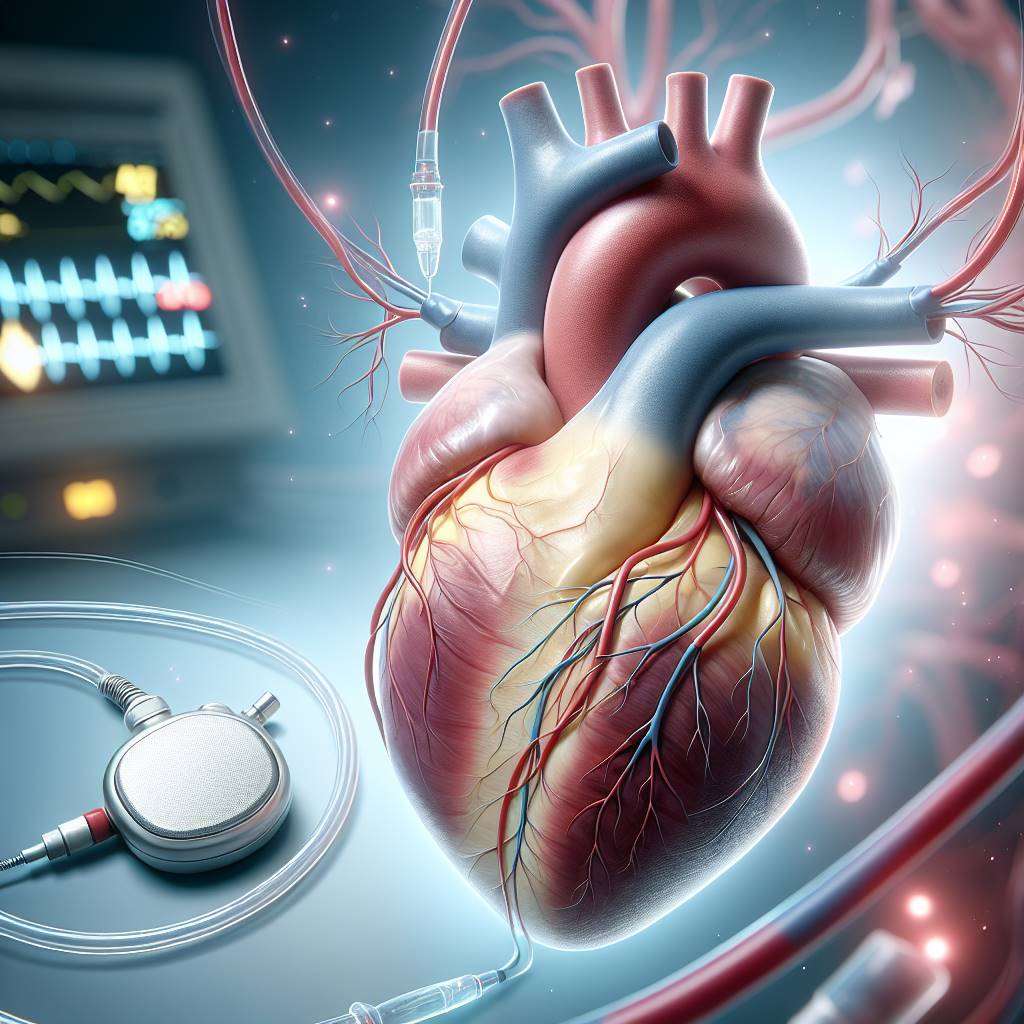A pacemaker is a small device implanted in the chest to regulate abnormal heart rhythms. While it is designed to be a long-term solution, there are instances where a pacemaker may need to be removed. Understanding the reasons and process for pacemaker removal is crucial for patients and caregivers to make informed decisions about their health.
Pacemaker removal is not a common procedure, but it can be necessary due to complications or changes in a patient's condition. Knowing when and why this might happen helps patients stay proactive about their treatment. This article explores the key insights, risks, and benefits of pacemaker removal and what to expect during the procedure.
Can a Pacemaker Be Safely Removed? Key Insights
Yes, a pacemaker can be safely removed under specific circumstances. The procedure is typically performed by a skilled cardiologist or electrophysiologist in a hospital setting. Modern medical advancements have made the removal process safer, with minimal risks when done by experienced professionals.
The safety of the procedure depends on factors such as the patient's overall health, the reason for removal, and how long the pacemaker has been implanted. For instance, older devices or those with damaged leads may require more complex removal techniques. In most cases, patients recover well after the procedure, especially with proper post-operative care.
It is essential to consult a healthcare provider to understand the risks and benefits of pacemaker extraction. Regular follow-ups and monitoring ensure that any complications are addressed promptly.

Reasons Why a Pacemaker Might Need Removal
There are several reasons why a pacemaker may need to be removed. One common cause is an infection at the implantation site or within the device itself. Infections can lead to severe complications if not addressed promptly, making removal a necessary step.
Other reasons include device malfunction, such as battery failure or lead damage, which may require replacement or repair. In some cases, a patient's heart condition may improve to the point where the pacemaker is no longer needed. Additionally, allergic reactions to the device materials or complications like blood clots can also necessitate removal.
- Infections at the implantation site
- Device malfunction or lead damage
- Improvement in the patient's heart condition
- Allergic reactions to device components
Each case is unique, so it is vital to discuss the specific reasons with a healthcare provider to determine the best course of action.
Understanding Pacemaker Removal: Risks and Benefits
Like any medical procedure, pacemaker removal carries certain risks. These may include bleeding, infection, or damage to surrounding tissues. However, the risks are generally low when the procedure is performed by an experienced specialist.
On the other hand, the benefits of removal often outweigh the risks, especially in cases where the device is causing complications. For example, removing an infected pacemaker can prevent the spread of infection and improve the patient's overall health. Similarly, addressing device malfunctions ensures that the patient receives the appropriate treatment.
Patients should weigh the risks and benefits with their doctor to make an informed decision. Proper pre-operative evaluation and post-operative care are crucial for a successful outcome.
When Is Pacemaker Removal Medically Necessary?
Pacemaker removal is considered medically necessary in specific situations. For instance, if the device becomes infected, immediate removal is often required to prevent life-threatening complications. Similarly, if the pacemaker or its leads malfunction, removal and replacement may be the best option.
Other scenarios include allergic reactions to the device materials or the development of blood clots around the leads. In rare cases, a patient's heart condition may improve significantly, eliminating the need for the pacemaker. These situations require careful evaluation by a cardiologist to determine the appropriate course of action.
Early detection of issues through regular check-ups can help identify when removal is necessary. Patients should report any unusual symptoms, such as swelling, redness, or pain near the implantation site, to their healthcare provider immediately.
What Happens During a Pacemaker Removal Procedure?
The pacemaker removal procedure is typically performed in a hospital under local or general anesthesia. The process involves carefully extracting the device and its leads while minimizing damage to surrounding tissues. Specialized tools, such as laser sheaths, may be used to safely remove leads that have been in place for a long time.
After the device is removed, the doctor will assess the site for any signs of infection or complications. In some cases, a new pacemaker may be implanted immediately if the patient still requires one. Recovery time varies, but most patients can resume normal activities within a few weeks.
Post-operative care is crucial to ensure proper healing and to monitor for any complications. Patients should follow their doctor's instructions and attend all follow-up appointments to ensure a smooth recovery.
Can You Live Without a Pacemaker After Removal?
A pacemaker is a life-saving device for individuals with irregular heart rhythms, such as bradycardia. However, in some cases, it may be necessary to remove the pacemaker. Whether you can live without it depends on your underlying heart condition. If the condition that required the pacemaker has resolved or improved, you may no longer need the device.
For example, some patients may have received a pacemaker temporarily after surgery or due to a reversible condition. In such cases, removal may not affect their health. However, if your heart still relies on the pacemaker to maintain a normal rhythm, removal without replacement could lead to serious complications, including arrhythmias or heart failure.
Always consult your cardiologist to understand your specific situation and whether living without a pacemaker is safe for you.

Signs You May Need Your Pacemaker Removed
While pacemakers are designed to last for years, there are certain signs that may indicate the need for removal. One of the most common reasons is an infection at the pacemaker site. Symptoms like redness, swelling, or discharge around the device should not be ignored.
Other signs include device malfunction, such as irregular pacing or failure to regulate your heart rate. In rare cases, the body may reject the pacemaker, leading to discomfort or allergic reactions. Additionally, if the leads (wires) of the pacemaker become damaged or dislodged, removal or replacement may be necessary.
- Persistent pain or swelling near the pacemaker site
- Unexplained fever or chills
- Changes in heart rhythm despite the pacemaker
If you experience any of these symptoms, consult your doctor immediately to determine if pacemaker removal is required.
How Long Does Pacemaker Removal Surgery Take?
The duration of pacemaker removal surgery depends on the complexity of the procedure. In most cases, removing the pacemaker generator (the main device) is relatively quick and can take about 30 minutes to an hour. However, if the leads need to be removed, the procedure may take longer, sometimes up to 2–4 hours.
Lead removal is more complex because the wires are often embedded in the heart tissue. Specialized tools, such as laser sheaths, may be used to safely extract them. The surgeon will also assess for any complications, such as scar tissue or infection, which could extend the surgery time.
Discuss the specifics of your procedure with your cardiologist or surgeon to better understand the expected timeline and recovery process.
Complications That May Lead to Pacemaker Removal
Several complications can necessitate the removal of a pacemaker. One of the most common reasons is an infection, which can occur at the implantation site or within the heart itself. If untreated, infections can lead to serious health risks, including endocarditis.
Other complications include mechanical issues, such as lead fractures or device malfunctions. In rare cases, patients may develop an allergic reaction to the materials used in the pacemaker. Additionally, some individuals may experience erosion of the device through the skin, making removal necessary.
| Complication |
Reason for Removal |
| Infection |
Risk of spreading to the bloodstream |
| Device Malfunction |
Failure to regulate heart rhythm |
| Lead Damage |
Interruption in electrical signals |
If you suspect any of these complications, seek medical advice promptly to avoid further health risks.
Is Pacemaker Removal Painful? What to Expect
Many patients worry about whether pacemaker removal is painful. The good news is that the procedure is typically performed under local or general anesthesia, ensuring you do not feel pain during the surgery. However, some discomfort or soreness at the site is normal during the recovery period.
After the procedure, you may experience mild swelling or bruising, which can be managed with prescribed pain medications. Your doctor will provide specific aftercare instructions, such as keeping the area clean and avoiding strenuous activities for a few weeks.
It’s important to follow up with your cardiologist to monitor your recovery and address any concerns. If you experience severe pain, fever, or unusual symptoms, contact your healthcare provider immediately.
Pacemaker Removal After Infection: What You Should Know
A pacemaker is a life-saving device, but in some cases, it may need to be removed. One of the most common reasons for pacemaker removal is an infection. Infections can occur at the implantation site or in the surrounding tissues, leading to complications if not addressed promptly.
Signs of infection include redness, swelling, fever, or discharge near the pacemaker site. If these symptoms occur, consult your doctor immediately. Infections can spread, making it crucial to remove the pacemaker and treat the infection with antibiotics. After the infection is resolved, a new pacemaker may be implanted.
It's important to note that pacemaker removal is a specialized procedure performed by experienced cardiologists. Always follow your doctor’s advice to ensure safe treatment.

Recovery Timeline After Pacemaker Removal Surgery
Recovery after pacemaker removal depends on the reason for removal and the patient’s overall health. Most patients experience mild discomfort for a few days, but recovery is generally quick if there are no complications.
In cases of infection, recovery may take longer as the infection needs to be fully treated. Patients are advised to rest and avoid strenuous activities during the initial recovery period. Follow-up appointments are crucial to monitor healing and determine if a new pacemaker is needed.
Here are some tips for recovery:
- Keep the surgical site clean and dry.
- Take prescribed medications, including antibiotics, as directed.
- Report any unusual symptoms, such as fever or excessive pain, to your doctor.
Can a Pacemaker Be Replaced After Removal?
Yes, a pacemaker can often be replaced after removal. Replacement is typically necessary if the original pacemaker was removed due to infection, malfunction, or end-of-life battery issues. The decision to replace the device depends on the patient’s medical condition and heart health.
Before replacing the pacemaker, doctors ensure that any underlying issues, such as infections, are fully resolved. Once the patient is stable, a new pacemaker can be implanted. Modern pacemakers are more advanced and may offer additional features to improve heart function.
It’s essential to discuss the risks and benefits of replacement with your cardiologist. They will guide you on the best course of action based on your specific needs.
Pacemaker Removal Costs in India: What to Consider
The cost of pacemaker removal in India varies depending on factors such as the hospital, the complexity of the procedure, and the reason for removal. On average, the cost ranges between ₹50,000 and ₹1,50,000. Additional costs may include diagnostic tests, medications, and follow-up care.
Patients should also consider the cost of a replacement pacemaker if needed. Government hospitals and insurance plans may cover part of the expenses, so it’s important to check your coverage beforehand.
Here’s a comparison of costs:
| Type of Hospital |
Estimated Cost (₹) |
| Government Hospital |
₹20,000–₹50,000 |
| Private Hospital |
₹1,00,000–₹1,50,000 |
Expert Advice on Pacemaker Removal and Replacement
Pacemaker removal and replacement are complex procedures that require expert care. Cardiologists recommend removal only when absolutely necessary, such as in cases of infection, device failure, or complications. Always consult a qualified specialist to understand your options.
Before undergoing the procedure, ensure you discuss the potential risks, benefits, and recovery process with your doctor. They may also recommend lifestyle changes or medications to support your heart health after the procedure.
Remember, timely intervention can prevent complications and improve outcomes. Trust your healthcare team to guide you through the process and provide the best care possible.
Best Pacemaker Surgery Doctors in India
Dr. Balbir Singh, affiliated with Medanta - The Medicity, Gurugram, is a renowned cardiologist with over 30 years of experience. He specializes in electrophysiology and pacemaker procedures. Another expert, Dr. Tarun Kumar, from AIIMS, New Delhi, holds a DM in Cardiology and has extensive expertise in advanced cardiac device management. Both doctors are internationally recognized for their contributions to cardiac care.
Learn more on best pacemaker implantation surgery doctors in india
Best Pacemaker Surgery Hospitals in India
Fortis Escorts Heart Institute, New Delhi, and Apollo Hospitals, Chennai, are leading centers for pacemaker removal in India. Both are NABH and JCI accredited, offering advanced cardiac care with state-of-the-art facilities like robotic surgery and multidisciplinary teams. These hospitals are known for their high success rates and comprehensive international patient services.
Find more best pacemaker implantation surgery hospitals in india
Pacemaker Surgery Cost in India
The cost of pacemaker removal in India typically ranges from INR 1,50,000 to INR 3,00,000 (approximately USD 1,800 to USD 3,600). Factors influencing costs include the doctor’s expertise, hospital facilities, and procedure complexity. The average hospital stay is 2-3 days. India offers a significant cost advantage compared to Western countries, with options for medical insurance and third-party financing.
Learn pacemaker implantation surgery cost in india
Pacemaker Surgery Treatment in India
Pacemaker removal in India is performed using advanced techniques under strict global medical protocols. The procedure involves local or general anesthesia, careful extraction of the device and leads, and management of any complications. Leading hospitals use laser-assisted tools for precision. Recovery typically takes 1-2 weeks, with follow-up care ensuring optimal outcomes.
Learn on Pacemaker Surgery Treatment in India
FAQs
Can a pacemaker be removed permanently?
Yes, a pacemaker can be removed permanently if it is no longer needed, such as in cases where the underlying heart condition has resolved or alternative treatments have been implemented. However, this decision is made after thorough evaluation by a cardiologist.
Is pacemaker removal a risky procedure?
While pacemaker removal is generally safe, it carries some risks, such as infection, bleeding, or damage to surrounding tissues. These risks are minimized when performed by experienced specialists in advanced medical facilities.
How long does it take to recover after pacemaker removal?
Recovery after pacemaker removal typically takes 1-2 weeks. Patients are advised to follow their doctor’s instructions, avoid strenuous activities, and attend follow-up appointments to monitor their condition.
What happens if the leads of the pacemaker are left behind?
In some cases, pacemaker leads may be left in place if their removal poses a higher risk. This is decided based on the patient’s condition and the potential complications of lead extraction.
Can a pacemaker be replaced after removal?
Yes, a pacemaker can be replaced after removal if the patient’s condition requires it. Replacement is usually done during the same procedure or after addressing any complications like infection.
What are the signs that a pacemaker needs to be removed?
Signs that a pacemaker may need removal include infection at the implant site, device malfunction, or the resolution of the underlying heart condition. Consult a cardiologist for proper evaluation.
Is pacemaker removal covered by insurance?
In most cases, pacemaker removal is covered by health insurance. It is advisable to check with your insurance provider regarding coverage details and any out-of-pocket expenses.
Can pacemaker removal be done on an outpatient basis?
Pacemaker removal is usually performed in a hospital setting due to the need for specialized equipment and monitoring. However, some cases may allow for same-day discharge depending on the patient’s condition.
What precautions should be taken after pacemaker removal?
After pacemaker removal, patients should avoid heavy lifting, follow wound care instructions, and attend follow-up visits. Any signs of infection or complications should be reported to the doctor immediately.
Can pacemaker removal affect heart function?
Pacemaker removal may affect heart function if the device was essential for maintaining a normal rhythm. This is why thorough evaluation and alternative treatment plans are crucial before removal.
Understanding Pacemakers: Customization and Emotional Effects
Pacemakers are vital devices that help regulate heart rhythms, ensuring patients maintain a healthy heartbeat. One of the fascinating aspects of pacemakers is how doctors customize their settings to meet individual patient needs. For an in-depth look at this process, check out our blog on pacemaker settings and customization.
While the physical benefits of pacemakers are well-documented, the psychological impact on patients is equally significant. Many individuals experience a range of emotions after receiving a pacemaker, from relief to anxiety. To explore these feelings further, read our article on the psychological impact of pacemaker implants.
Understanding both the technical and emotional aspects of pacemaker use can empower patients and their families, leading to better overall care and support.